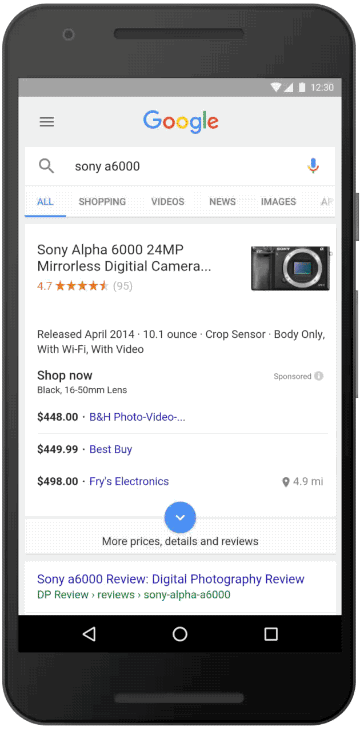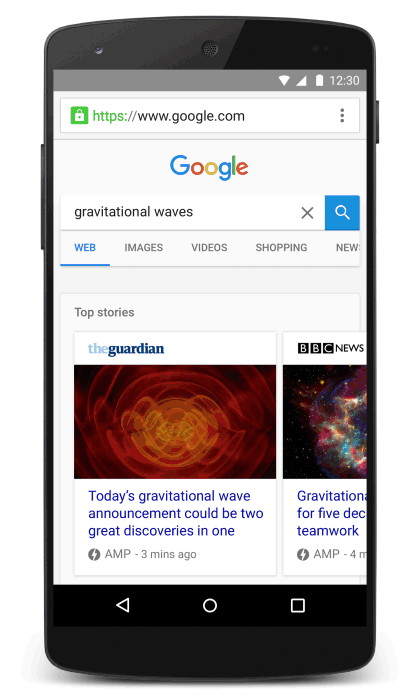The Line Between Apps and Mobile Sites Is Vanishing
Published on May 23, 2016/Last edited on May 23, 2016/10 min read


Todd Grennan
Content Production Principal, Content Marketing at BrazeMobile is entering a pivotal time. Right now, consumers are spending 85% of their mobile device time using apps. But while the average person has 119 apps installed on their smartphone, they spend 80% of their app-related time on their favorite three apps. This means that—for most brands—reaching and engaging their customers on mobile takes a whole lot more than just creating an app and paying to acquire new users. That’s a challenge for many companies. But for mobile’s big brands, it’s an opportunity to take advantage of the burgeoning platform economy to extend their influence.
Want proof? At Google I/O 2016, Google announced Android Instant Apps, which allow users to use Android apps via the mobile web without having to download the app. Which is cool, and convenient for mobile users. But the real story is how seriously Google is taking the platform economy, and how this new development points the way toward a coming shift in the mobile landscape.
To fully appreciate the significance of this development, we’ll look at the steps Google has taken over the past three years to reduce the distance between apps and mobile websites and how that history points to the future of mobile.
Read on for a catch-me-up, highlights from Google I/O, and what all this means for marketers.
Google’s stake in mobile
For Google, the rise of mobile has been something of a mixed bag. On the one hand, its stewardship of the Android mobile OS, the Google Play store, and the rest of the Android mobile ecosystem has given it an enormous stake in mobile, making it possible for the company to influence and profit from mobile’s growth worldwide.
But while the advent of mobile hasn’t been without its benefits for Google, in many ways the company has gone from being the defining platform of the desktop era—driven in large part by its dominance of desktop search—to being one of several major mobile heavyweights, along with Apple, Facebook, and others. And while desktop isn’t going away, it is being surpassed by mobile: in 2015, time spent on mobile surpassed time spent on desktop and Google reported that more searches were being made on mobile than desktop.
For Google to maintain its status in the new mobile economy, it needs to find ways to make itself as indispensable to third-party brands on mobile as it is on desktop. And one major part of that strategy has been the company’s ongoing efforts to use its resources and influence to make mobile apps more accessible and useful in the context of mobile search. Android Instant Apps are a major step in that direction, but they’re not Google’s first step.
Apps are becoming mobile web pages
It started in 2013. That was the year that Google first started indexing the contents of certain Android apps in order to render them searchable by its Google search engine. (All Android Apps became eligible for indexing in 2014 and the service was expanded to iOS apps in 2015.) At first, app indexing only allowed users to access app-only content from a Google search if they already had the app in question installed on their phone or tablet. But in April 2015, Google began allowing users to access content within other apps by making it possible for them to easily download the app containing their search result and then deep linking them to the relevant page or section within that app.
Google took another step toward integrating mobile apps into the mobile web experience last fall with the launch of Google App Streaming. Instead of making app content accessible by making it easier to download them, Google did away with the downloading step altogether. Instead, when a user clicked on a link to app-only content with Google search results, they were taken to a version of that app being run on a virtual machine in Google’s cloud platform, making it possible for them to browse and make use of that app without ever downloading it to their mobile device.

Using B&H’s app via Android Instant Apps. Via Android Authority.
Android Instant Apps takes the Google App Streaming experience and makes it even more seamless. Under the approach, apps are broken down into modular parts and then uploaded to Google’s cloud. That means that, for instance, when someone clicks on a link to a video within your media app, only the section of the app responsible for showing that video has to be loaded, making the user experience of watching that video fast, effortless, and almost indistinguishable from watching that same video on the mobile web.
For mobile apps, one of their major weaknesses has been their lack of interconnection to the rest of the Internet. While you might stumble across a brand’s website during a web search, browse a little bit, and then start visiting regularly, new users have to download an app in order to decide if they want to keep using it, raising the barrier to entry and increasing the chances that a customer will download an app and then abandon it when it proves not to serve the purpose they’d hoped it would. By making it possible for people to try out apps without downloading them, Android Instant Apps can both improve the user experience and will also make it more likely that people who do download apps are the ones who will become loyal customers.
Websites are becoming apps
But while Google is taking steps to make apps as easy to access and use as web pages, the company has been carrying out a parallel effort that is focused on making websites function more like apps. That might seem a little strange, or a little ironic, at first glance. After all, why go to the work of making apps function more like websites if websites should really be functioning more like apps? But it actually makes a lot of sense.
Mobile apps have long had one big advantage over websites on mobile: they’re built exclusively for smartphones and tablets. Not every app is great, of course, but all of them are designed to function on mobile devices, making it more likely that the user experience on mobile will be satisfying. Many websites, on the other hand, were first created with desktop in mind. That’s led to a lot of frustrating user experiences on mobile—paragraphs that extend far beyond the screen, endless scrolling, and graphics that require significant zooming and resizing to see correctly. That’s the aspect of the web that Google’s taken aim at in recent years, with significant results.
Last year, Google took advantage of its dominance in the search space to nudge brands to make their websites more functional on mobile. In February 2015, Google announced that it would begin assessing whether websites were “mobile-friendly” and would take that factor into account when displaying search results, potentially improving the rankings of mobile-friendly sites. That announcement triggered panic—with news outlets dubbing the change “Mobilegeddon”—and spurred many brands to rework their websites to ensure that they were counted as mobile friendly, significantly improving the mobile web experience as whole.
Google has also launched a couple initiatives intended to bolster the mobile web user experience by making webpages function more like mobile apps:
1. Progressive web apps
This Google-supported approach to web development allows brands to create a mobile web presence that incorporates many of the most beneficial aspects of mobile apps, including customer messaging, improved customer data collection, access to device sensors, and far faster loading times. Sites built as progressive web apps are capable of seamlessly mimicking the look and feel of mobile apps within a mobile web context, providing a faster, more pleasant user experience.
2. Accelerated mobile pages (AMP)

Accelerated Mobile Pages. Via Greenbot.
This open source initiative backed by Google is intended to support increased use of mobile optimized content by third-party websites, with the intention of significantly speeding up content load times and delivering a better user experience on the mobile web. Websites that take advantage of AMP can automatically cache their content in Google’s cloud-based AMP cache at no cost, reducing the risk that customers will abandon a mobile web page due to how slowly it’s loading.
App-like websites and web-like apps: What it means for marketers
As differences between mobile apps and mobile websites get smaller, the user experience is becoming increasingly important. And for most mobile-aware brands, Google’s Android Instant Apps, Progressive Web Apps, and AMP initiatives represent an opportunity to take advantage of Google’s platform to extend their ability to reach new and current customers and to provide a more appealing user experience across platforms.
But while these developments from Google have the potential to pay off in new and happy customers for brands that act on them, they also make it far more important for marketers to think about their customer acquisition, engagement, retention, and monetization strategies in a holistic way.
This is the way mobile is moving. Whether or not you take advantage of Google’s new tools as part of your mobile marketing strategy, it’s important to keep your eyes open and to make sure that your approach to mobile can grow and change as the space does. Here’s what you should expect:
One experience, one view of the customer
When websites and apps can provide the same user experience and can be reached easily through the same channels, customers are going to care a lot less about whether they engage with your brand using your app or via your website. And that’s going to give brands that have a genuinely 360-degree view of their customers a big advantage. A customer who has your app installed may use your website just as frequently, and if you don’t have the ability to view their web activity and in-app behavior in concert, you’re going to come away with a mistaken idea of what they care about, how often they’re engaging, and how you should engage and retain them as customers.
However customers engage, have a way to reach them
As customers begin to use your app and website more interchangeably, it’s important to make sure you have the messaging capabilities you need to effectively communicate with them on both platforms. Multichannel messaging is already important on mobile, but brands that don’t take steps to extend their multichannel capabilities to web messaging will miss out on important opportunities to effectively communicate with customers who haven’t downloaded their app (or who have opted out of push notifications and emails). If a significant subset of your customers are mobile web–only and you don’t have the messaging tools to reach them, you’re going to lose out to competitors who’ve taken steps to engage, retain, and monetize their web audience.
Acquisition will get easier—but the user experience will become even more important
With Android Instant Apps, getting new customers to give your app a shot will be easier than it’s ever been; but it’ll also be easier for customers to try out an app and walk away. Understanding how these users experience every aspect of your app and website is going to be an essential part of demonstrating the value that your brand can provide and of convincing them to stick around. Brands that understand their customers and can provide an experience that convinces people to continue using their app after trying it out are going to succeed in a big way; brands that don’t are going to find themselves in a very tough spot.

Be Absolutely Engaging.™
Sign up for regular updates from Braze.
Related Content
View the Blog
How behavioral marketing turns data into personalized experiences

Team Braze

The new inbox reality: How iOS changes are reshaping email marketing

Aparna Prasad

Experience optimization: Turning data insights into better journeys
